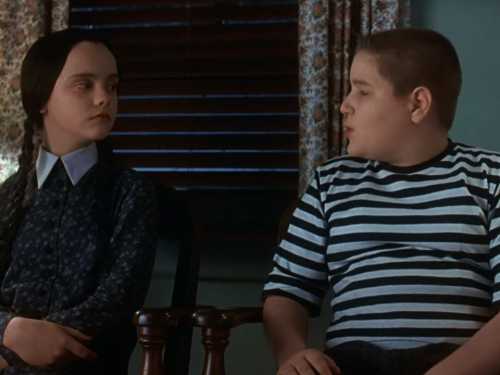
Fifteen years separated “The Godfather Part II” from “Part III,” and the years showed. The series’ director, Francis Ford Coppola, enriched the latter film with both the life experience (much of it painful) and the experience of his work on other, often daring and distinctive films with which he filled the intervening span of time. By contrast, James Cameron, who delivered the original “Avatar” in 2009, has delivered its sequel, “Avatar: The Way of Water,” thirteen years later, in which time he has directed no other feature films—and, though he doubtless has lived, the sole experience that the new movie suggests is a vacation on an island resort so remote that few outside visitors have found it. For all its sententious grandiosity and metaphorical politics, “The Way of Water” is a regimented and formalized excursion to an exclusive natural paradise that its select guests fight tooth and nail to keep for themselves. The movie’s bland aesthetics and banal emotions turn it into the Club Med of effects-driven extravaganzas.
The action begins about a decade after the end of the first installment: the American-born Jake Sully (Sam Worthington) has cast his lot with the extraterrestrial Na’vis, having kept his blue Na’vi form, taken up residence with them on the lush moon of Pandora, and married the Na’vi seer Neytiri (Zoe Saldaña), with whom he has had several children. The couple’s foster son, Spider (Jack Champion), a full-blooded human, is the biological child of Jake’s archenemy, Colonel Miles Quaritch, who was killed in the earlier film. Now Miles has returned, sort of, in the form of a Na’vi whose mind is infused with the late colonel’s memories. (He’s still a colonel and still played by Stephen Lang.) Miles and his platoon of Na’vified humans launch a raid to capture Jake, who, with his family, fights back and gets away—all but Spider, whom Miles captures. The Sully clan flees the forests of Pandora and reaches a remote island, where most of the movie’s action takes place.
The island is the home of the Metkayina, the so-called reef people, who—befitting their nearly amphibian lives—have a greenish cast to contrast with Na’vi blue; they also have flipper-like arms and tails. They are an insular people, who have remained undisturbed by “sky people”—humans. The Metkayina queen, Ronal (Kate Winslet), is wary of the newcomers, fearing that the arrival of Na’vis seeking refuge from the marauders will make the islands a target, but the king, Tonowari (Cliff Curtis), welcomes the Sullys nonetheless. Unsurprisingly, the foreordained incursion takes place. An expedition of predatory human scientists arrive on a quest to harvest the precious bodily fluid—the sequel’s version of unobtainium—of giant sea creatures that are sacred to the Metkayina. The invading scientists join the colonel and his troops in the hunt for Jake, resulting in a colossal sequence that combines the two adversaries’ long-awaited hand-to-hand showdown with “Titanic”-style catastrophe.
The interstellar military conflict is the mainspring of the story, and a link in what is intended to be an ongoing series. (The next installment is scheduled for release in 2024.) But it’s the oceanic setting of the Metkayina that provides the sequel with its essence. Cameron’s display of the enticements and wonders of the Metkayina way of life is at once the dramatic and the moral center of the movie. The Sullys find welcoming refuge in the island community, but they also must undergo initiations, ones that are centered on the children and teen-agers of both the Sullys and the Metkayina ruling family. This comes complete with the macho posturing that’s inseparable from the cinematic land of Cameronia. Two boys, a Na’vi and a Metkayina, fight after one demands, “I need you to respect my sister”; afterward, Jake, getting a glimpse at his bruised and bloodied son, is delighted to learn that the other boy got the worst of it. Later, when, during combat, trouble befalls one of the Na’vi children, it’s Neytiri, not Jake, who loses control, and Jake who gives her the old locker-room pep talk about bucking up and keeping focus on the battle at hand. The film is filled with Jake’s mantras, one of which goes, “A father protects; it’s what gives him meaning.”
What a mother does, beside fighting under a father’s command, is still in doubt. Despite the martial exploits of Neytiri, a sharpshooter with a bow and arrow, and of Ronal, who goes into battle while very pregnant, the superficial badassery is merely a gestural feminism that does little to counteract the patriarchal order of the Sullys and their allies. Jake’s statement of paternal purpose is emblematic of the thudding dialogue; compared to this, the average Marvel film evokes an Algonquin Round Table of wit and vigor. But there’s more to the screenplay of “The Way of Water” than its dialogue; the script (by Cameron, Rick Jaffa, and Amanda Silver) is nonetheless constructed in an unusual way, and this is by far the most interesting thing about the movie. The screenplay builds the action anecdotally, with a variety of sidebars and digressions that don’t develop characters or evoke psychology but, rather, emphasize what the movie is selling as its strong point—its visual enticements and the technical innovations that make them possible.
The extended scenes of the Sullys getting acquainted with the life aquatic are largely decorative, to display the water-world that Cameron has devised, as when the young members of the family learn to ride the bird-fish that serve as the Metkayina’s mode of conveyance; when one of them dives to retrieve a shell from the deep; and when the Sullys’ adopted Na’vi daughter, Kiri (played, surprisingly, by Sigourney Weaver, both because she’s playing a teen-ager and because it’s a different role from the one she played in the 2009 film), discovers a passionate connection to the underwater realm, a function of her separate heritage. The watery light and its undulations are attractions in themselves, but the spotlight is on the flora and fauna with which Cameron populates the sea—most prominently, luminescent ones, such as anemone-like fish that light the way for deep-sea swimmers who have a spiritual connection to them, and tendril-like plants that grow from the seafloor and serve as a final resting place for deceased reef people.
Putting the movie’s design in the forefront does “The Way of Water” no favors. Cameron’s aesthetic vision is reminiscent, above all, of electric giftwares in a nineteen-eighties shopping mall, with their wavery seascapes expanded and detailed and dramatized, with the kitschy color schemes and glowing settings trading homey disposability for an overblown triumphalist grandeur. It was a big surprise to learn, after seeing the film, that its aquatic settings aren’t entirely C.G.I. conjurings—much of the film was shot underwater, for which the cast underwent rigorous training. (To prepare, Winslet held her breath for over seven minutes; to film, a deep-sea cameraman worked with a custom-made hundred-and-eighty-pound rig.) For all the difficulty and complexity of underwater filming, however, the movie is undistinguished by its cinematographic compositions, which merely record the action and dispense the design.
Yet Cameron’s frictionless, unchallenging aesthetic is more than decorative; it embodies a world view, and it’s one with the insubstantiality of the movie’s heroes, Na’vi and Metkayina alike. They, too, are works of design—and are similarly stylized to the point of uniform banality. Both are elongated like taffy to the slenderized proportions of Barbies and Kens, and they have all the diversity of shapes and sizes seen in swimsuit issues of generations past. The characters’ computer-imposed uniformity pushes the movie out of Uncanny Valley but into a more disturbing realm, one featuring an underlying, drone-like inner homogeneity. The near-absence of characters’ substance and inner lives isn’t a bug but a feature of both “Avatar” films, and, with the expanded array of characters in “The Way of Water,” that psychological uniformity is pushed into the foreground, along with the visual styles. On Cameron’s Edenic Pandora, neither the blues nor the greens have any culture but cult, religion, collective ritual. Though endowed with great skill in crafts, athletics, and martial arts, they don’t have anything to offer themselves or one another in the way of non-martial arts; they don’t print or record, sculpt or draw, and they have no audiovisual realm like the one of the movie itself. The main distinctions of character involve family affinity (as in Jake’s second mantra, “Sullys stick together”) and the dictates of biological inheritance (as in the differences imposed on Spider and Kiri by their different origins).
Cameron’s new island realm is a land without creativity, without personalized ideas, inspirations, imaginings, desires. His aesthetic of such unbroken unanimity is the apotheosis of throwaway commercialism, in which mystery and wonder are replaced by an infinitely reproducible formula, with visual pleasures microdosed. Cameron fetishizes this hermetic world without culture because, with his cast and crew under his command, he can create it with no extra knowledge, experience, or curiosity needed—no ideas or ideologies to puncture or pressure the bubble of sheer technical prowess or criticize his own self-satisfied and self-sufficient sensibility from within. He has crafted his own perfect cinematic permanent vacation, a world apart, from which, undisturbed by thoughts of the world at large, he can sell an exclusive trip to an island paradise where he’s the king. ♦
Sourse: newyorker.com






